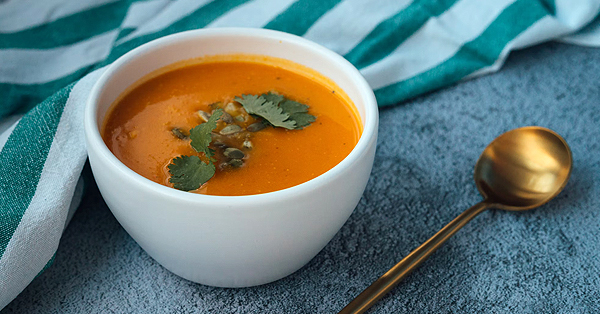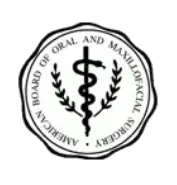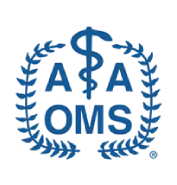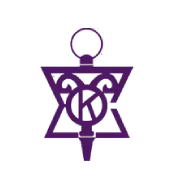What to Eat After Wisdom Teeth Removal
By: Ana Gotter, Healthline
Most people heal quickly from wisdom teeth removal, as long as they follow the doctor's instructions during recovery. Eating and drinking the right foods - and avoiding the wrong ones - is a crucial part of these instructions. You'll be much more comfortable, and you'll significantly decrease the chance of complications.
Overview
Wisdom teeth are the third set of molars located in the back of your mouth. They typically come in when you're between 17 and 25 years of age. It's common to have your wisdom teeth removed. They may need to be removed because they're impacted and won't come in normally. Or they may need to be removed because they're coming in at a wrong angle.
During the removal procedure, you'll be given anesthesia. Many surgeons will use some form of local, sedation, or general anesthesia. If your teeth haven't come in yet, your surgeon will likely make incisions to remove them. They may need to remove bone if it's blocking access to the root of the tooth. Once the teeth are removed, they'll clean the site and add stitches to close the incision site if necessary. They'll also place gauze over the extraction site.
What you eat following your wisdom teeth removal is important. Eating soft or liquid foods won't irritate the extraction site, helping it to heal faster. Some foods and drinks can irritate or become trapped in the extraction sites, leading to infection. It's important to follow your doctor's orders about what to eat following surgery.
What to eat after wisdom teeth removal
Immediately following your wisdom teeth removal and during recovery, you'll want to start with liquid and soft foods. You won't have to chew these foods, saving you some pain. Avoid eating harder foods at this time, as these might damage, or get trapped in, the recovering area.
Examples of liquid and soft foods include:
- apple sauce
- yogurt
- smoothies
- broths and blended soups
- mashed potatoes
- Jell-O, pudding, and ice cream
Cold foods like Jell-O, smoothies, and ice cream may relieve some discomfort. Nutrient-rich soups and smoothies can help promote healing. Soups, in particular, can help balance out the other high-sugar options on the list.
As you start to heal, you can incorporate more normal foods. Start off easy with semisoft foods like scrambled eggs, instant oatmeal, and toast before moving to foods like chicken, fruits, and vegetables.
What not to eat after wisdom teeth removal
There are some foods that you should avoid following your wisdom teeth removal. Stick to the foods listed above for the first few days. Avoid the following foods for a week or more until the extraction site has healed.
- Acidic and spicy foods (including citrus juice) may cause irritation and pain.
- Alcoholic beverages can irritate the area and are likely to interact negatively with the pain medication prescribed by your doctor.
- Grains (including rice and quinoa) and any types of seeds can easily become trapped in the extraction site.
- Hard or difficult-to-chew foods (including nuts, chips, and jerky) can reopen the stitches and delay healing.
You should also avoid smoking or using any type of tobacco for a minimum of 72 hours after surgery as it can severely increase the risk of complications. Don't use chewing tobacco for at least a week.
Recovery timeline
For the first 24 to 48 hours, eat only liquid and soft foods like yogurt, apple sauce, and ice cream. Cold foods may help with some of the discomforts.
As you start to feel better, you can try incorporating more solid foods. On the third day after surgery, try foods like eggs, toast, or oatmeal. Gradually continue to increase solid foods as chewing doesn't cause any pain. If you experience pain when chewing, go back to soft and semisoft foods.
Many people are able to resume normal eating within a week.
Wisdom teeth removal complications
Wisdom teeth removal complications aren't common but can occur. The most common complication is the reopening of the extraction site, which delays healing.
Dry sockets
Dry sockets are also common. They occur when the blood fails to clot in the tooth socket, or if the clot becomes dislodged. This typically happens between three and five days after tooth removal. Dry sockets can be treated by your surgeon. They will flush out debris and may cover the socket with a medicated dressing. Symptoms of dry sockets include:
- an unpleasant taste or smell coming from the socket
- aching or throbbing pain in the gum or jaw (it may be intense)
- exposed bone
Infections
Infections can be caused by food particles or other bacteria becoming trapped in the socket where your wisdom teeth were removed. Bacteria can spread throughout the body and should be treated quickly. Symptoms of an infection include:
- blood or pus from the extraction site
- fever
- spasms of the jaw muscles
- chills
- painful or swollen gums near the extraction area
- bad taste or smell in the mouth
Nerve damage
Nerve damage from wisdom teeth removal is rare, but it can occur. During surgery, the trigeminal nerve may be injured. The injury is most often temporary, lasting several weeks or months. Nerve damage can be permanent if the injury is severe. Symptoms of nerve damage caused by wisdom tooth removal include:
- pain
- numbness or tingling in the gums, tongue, chin, surrounding teeth, and lower lips
Allergic reaction
If you show signs of an allergic reaction, seek emergency medical attention. You may be allergic to the medications your doctor prescribed, including your pain medication. Signs of an allergic reaction include:
- shortness of breath
- difficulty breathing
- feeling like your throat is closing or your tongue is swelling
- lightheadedness
- rapid heart rate
- skin rash
- fever
Source: www.healthline.com/health/what-to-eat-after-wisdom-teeth-removal






4.9 Stars
based on 134 reviews
5 Stars
based on 11 reviews
5 Stars
based on 11 ratings